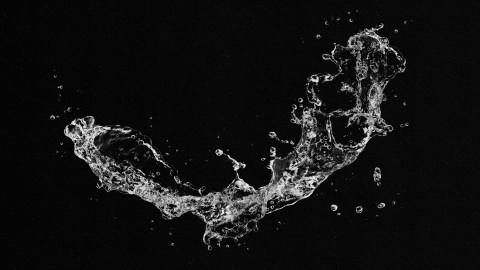Large study demystifies female squirting during sex

- Occasionally, when a woman is highly aroused, a gush of ten or more milliliters of clear, watery fluid can erupt from her vagina. Squirting, as this is called, is clouded by stigma and misconception.
- Researchers sought to demystify squirting by launching a large, nationally representative survey of women. They found that four in ten U.S. women have squirted in their lives.
- For a lot of women, squirting is a frequent and normal part of sexual intimacy.
The human male expels two fluids in response to sexual stimulation: semen (containing a variety of nutrients in addition to sperm cells) and pre-ejaculate (a colorless lubricant and an acid neutralizer that creates a favorable environment in the urethra for sperm).
Females, on the other hand, expel four: vaginal lubrication (clear, slippery, and slightly acidic plasma), ejaculate (thick, whitish fluid from the Skene’s gland), coital incontinence (urine), and — the most mysterious — squirt. Occasionally, when a woman is highly aroused, a gush of ten or more milliliters of clear, watery fluid can erupt from her vagina.
“Scientific conversation about squirting is characterized by two millennia of disagreement,” researchers with the OMGYES Research Group, a collection of scientists focused on exploring and improving women’s pleasure, wrote recently in a paper published in the Journal of Sex Research. There’s been debate and misunderstanding over what the “squirted” fluid is, where it originates, when squirting occurs, and how common it is.
Four questions about squirting
The first two questions were fairly conclusively answered in the last decade. As it turns out, the fluid released during squirting comes from the bladder. So yes, it’s pretty similar to urine, although there are small amounts of other compounds including sugars and proteins. Additionally, to the likely relief of women and their partners everywhere, it tends to be far more watered down than typical pee.
To demystify other aspects of female squirting, the OMGYES researchers collected data from a nationally representative sample of adult women. Slightly more than 3,000 completed a 90-item survey in July 2018. The researchers particularly aimed to elucidate squirting’s frequency, how pleasurable it is, its ties to orgasm, techniques for triggering it, and any concerns or challenges it might prompt.
They found that four in ten respondents reported ever squirting in their life, with a median frequency of three to five times. It commonly accompanied orgasm, but about a fifth reported that it never did. Eighty-six percent found the experience pleasurable.
Among women who reported squirting, three-quarters utilized specific techniques to make it happen. To build toward squirting, women used harder, more intense touch than usual, exerted pressure inside the vaginal wall, and concurrently applied outer and inner pressure. To release the fluid, some reported swiftly relaxing clenched muscles, applying a burst of speed or pressure with their chosen stimulation, or bearing down. For around 40% of women, squirting occurred unexpectedly simply from clitoral stimulation alone or without any specific pattern.
Demystifying and destigmatizing
As squirting is rarely discussed openly, its occurrence can prompt some consternation. The researchers asked women about any concerns or challenges they had. About 42% reported being concerned they were peeing, and 28% felt shame about making a mess. Other concerns included being nervous about losing control, feeling worried that their partner wouldn’t like it, and fretting that something was wrong with them.
Perhaps the most important takeaway from the survey is that close to half of U.S. women have ever squirted in their lives, so it’s quite common. For a lot of women, squirting is a frequent part of sexual intimacy, and — when one is suitably informed by scientific fact and, if one so chooses, equipped with the proper tools to contain the torrent — it can heighten fun and pleasure rather than detract from it.





